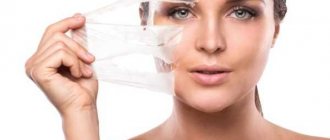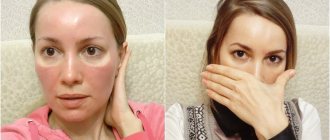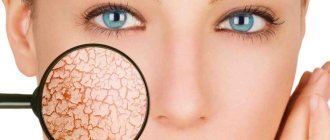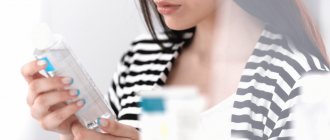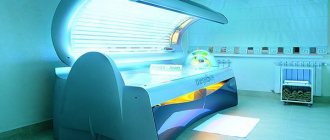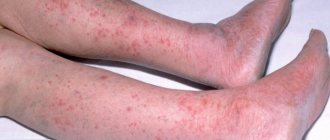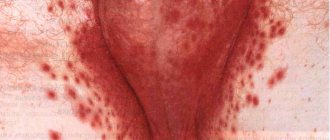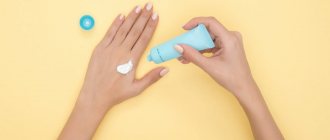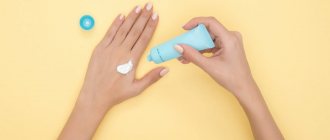- 33253
- 09-10-2020
- Author: Mysekret Team
- 0
Peeling is a great way to refresh your facial skin and restore its lost radiance. But girls who decide to undergo this procedure know that for at least a week after cleaning they will have to literally hide from prying eyes. The reason for this is severe peeling of the skin.
Causes of peeling skin after peeling
Exfoliation (the second name for the deep skin cleansing procedure) is the self-cleaning of the surface structure of the epidermis, which we call exfoliation. In other words, facial peeling is inherently inseparable from the process of exfoliating cells of the stratum corneum of the skin. But in some cases, the skin peels off the face too intensely, which greatly worries those who have undergone the peeling procedure.
To determine the acceptable intensity of post-peeling peeling, its main causes . These include factors such as:
See also...
✅ How to massage lips after augmentation with hyaluronic acid?
✅ What to do if a mercury thermometer breaks in your apartment?
✅ How to understand that bees have not wintered well and what a beekeeper should do immediately after winter
✅ What to do if the hair on your head is falling out a lot
- Intensity. Cosmetologists distinguish three types of peeling: superficial, medium and deep. The last two types imply an impact on the deeper layers of the epidermis, therefore, the skin is injured more intensely. As a result, a few days after the peeling procedure, severe peeling appears, accompanied by redness and swelling;
- Chemical composition of the peeling preparation. Gentle types of exfoliatives include alpha hydroxy acids (malic, lactic, etc.) and enzyme preparations based on bromelain and papain. Such components rarely cause severe peeling. But the use of trichloroacetic acid can provide intense exfoliation;
- Individual characteristics of the epidermis. As a rule, patients whose skin is hypersensitive and dry experience excessive peeling after peeling.
Interesting fact : retinoic or yellow peeling has one of the shortest rehabilitation periods. The consequences of its implementation become almost unnoticeable after 2–3 days. However, how many days the skin peels off after yellow peeling will largely depend on the condition of the patient’s epidermis and her age.
Almond peeling
MANDELICPEEL 40% – superficial peeling based on mandelic acid obtained from bitter almonds.
Mandelic acid (phenylglycolic acid) is an aromatic fatty acid belonging to alpha hydroxy acids. The action of mandelic acid is similar to that of glycolic acid. However, since mandelic acid is a larger molecule, it penetrates the skin slowly. This results in good controllability of the penetration of the almond peeling drug and low irritating effect. A short post-peeling period is used with dark and dark skin, papulo-pustular acne. Peeling action:
- antiseptic (bactericidal and antimycotic);
- keratolytic;
- anticomedogenic;
- moisturizing.
Mandelic acid is the most effective of the AHA acids in the treatment of acne, as it has a good keratolytic effect. Prevents comedogenesis and has a bactericidal effect, comparable in effectiveness to the use of antibiotics. Mandelic acid does not have a photosensitizing effect. Therefore, peeling can be carried out during periods of high solar activity.
How long does it take for the skin to peel after peeling?
Woman after deep chemical peeling (on the 5th day after the procedure)
Many patients or patients who decide to undergo a peeling procedure are primarily interested in how long the recovery will take and how long it will take to achieve the desired rejuvenation effect.
It is not possible to clearly determine on what day after peeling peeling will begin, but you can roughly calculate the duration of the rehabilitation period in days depending on the type of product used:
- For those undergoing deep cleansing for the first time, a superficial peel , which uses an exfoliative with a minimal concentration of acid. In this case, peeling of the skin occurs approximately on the third day, and the skin after peeling will peel off for another 2 to 3 days;
- If a medium peel , the peeling intensity is higher, and the process itself will take about seven days;
- Deep exfoliation involves the most traumatic method of facial cleansing. Accordingly, the regeneration process after deep peeling will be the longest, peeling will last at least 10 - 15 days.
Consequences of peeling
After exposure to chemical components used for superficial, medium or deep peeling, the skin receives a chemical burn. As a result, the top layer of the epidermis dies and peels off. What we see is the process of exfoliation of the used stratum corneum, which lasts several days or even weeks.
At the same time, the skin begins to recover on its own. The amount of collagen and elastin fibers increases, and the “new” cells produced rise to the surface, replacing the old dead layer. In this case, the facial skin looks reddened, peeling appears, swelling and a strong burning/itching sensation are possible. But all these phenomena after the procedure are considered absolutely normal.
Unfortunately, the consequences are not always limited to banal peeling. There are also more serious side effects. Atypical reactions to peeling include the following symptoms:
- Hyperemia. Erythema (redness) is a typical reaction to traumatic effects on the skin. However, if the red spots change shade, become more intense in color and do not go away within the maximum permissible period after peeling, you should consult a doctor;
- An exudative rash with clear or cloudy watery contents is a direct signal of a severe thermal/chemical burn due to a violation of the technology of the peeling procedure and an excess of the peeling concentration. Scars and age spots on the face often become a disastrous consequence;
- An allergic reaction in the form of severe swelling of facial skin tissue, erythema and increased local temperature. Usually appears in the first days after the procedure;
- Hyperpigmentation. Overtakes those who ignore the rules of skin care after cleansing and appear in the sun without first applying sunscreen cosmetics during the day;
- Scarring is the formation of residual scars on the skin, which is a consequence of mechanical damage to drying crusts on the face.
Most often, atypical reactions to peeling occur for three reasons, including incorrect selection of an exfoliative drug, silence or untimely identification of unaccounted for contraindications to the procedure and errors, or ignoring recommendations during the rehabilitation period during the first days after peeling.
WE'RE LOOKING FOR REASONS TO LOVE EXPELITION
Peeling skin after peeling is like shopping after payday: a natural phenomenon. The name of the procedure itself comes from the English verb “To peel”, which in translation means “to peel off, exfoliate, exfoliate, exfoliate, remove the skin.” There is no need to worry here.
The point of peeling (or, in other words, exfoliation) is precisely to remove the dead, non-functional layer of cells and give life to a renewed, young layer. The beauty of peeling is that along with it, fine wrinkles, pimple marks, scars and age spots go away.
Different technologies act on the epidermis in different ways.
There are gentle peelings without peeling:
- Light fruity;
- Glycolic;
- Ultrasonic exfoliation;
- Laser carbon.
THE MORE AGGRESSIVE THE PEELING, THE MORE RADICALLY IT RENEWS
In response to stress, collagen and elastin fibers come to the body’s defense to “weave” a new frame.
absorbs nutrients 80% better
Recommendations for skin care after peeling
The recovery period after the peeling procedure largely depends on how deep the skin has been cleaned. Naturally, the appearance of the rejuvenating effect will have to wait. In addition, you must come to terms with temporary appearance defects, which include:
- Moderate to severe erythema (redness and swelling) on the treated areas of the epithelium;
- Skin tightness and dryness;
- A burning sensation and a local increase in temperature in the areas where peeling was performed;
- Intense peeling, the consequences of which are visible to others;
- General discomfort (physical and emotional).
In order to properly care for skin that has undergone such a traumatic process as peeling, you need to follow a strict regime, which in many respects is close to hospital treatment.
Facial care after peeling should include the following measures:
- Reducing physical activity, giving up strength training - with heavy exertion, sweating is inevitable, and this is undesirable for the skin after exfoliation. In addition, during intense sports training there is a risk of mechanical damage to the face;
- During the recovery period after peeling (2 - 2.5 weeks), you should completely avoid saunas, baths and swimming pools;
- Avoid foods with a high content of hot spices, spices and salt, as well as alcohol - their consumption increases the intensity of sweating;
- It's not worth smoking. When holding a cigarette in your mouth, you use the annular and other muscles of the mouth, and in the first day after peeling, you should minimize facial stress. Nicotine use is generally undesirable;
- During the recovery period after peeling, you must refrain from visiting public institutions and events. You must protect yourself from potential sources of infection;
- You should maintain a calm regime and try not to get nervous. Under stress, the body's regenerative functions significantly reduce their activity.
Even before the peeling procedure, be sure to ask your cosmetologist how to care for your face after chemical peeling. Each patient’s reaction to deep facial cleansing is individual, as it depends on the condition and characteristics of the body.
Tips for skin care during the post-procedure period are universal and practically do not depend on how the type of peeling was performed:
- Thorough moisturizing of the skin is necessary;
- Skin traumatized by mechanical or chemical forces tends to develop hyperpigmentation when exposed to ultraviolet rays. This is why it is necessary to use sunscreen cosmetics during the regeneration period;
- Products based on hyaluronate, thermal water, as well as products containing vitamins B3 and pantothenic acid will help reduce discomfort from peeling and tightness of the epidermis;
- It is not recommended to care for the skin during the recovery period using creams and lotions with a greasy oily texture, as this can lead to the formation of comedones and the retention of exfoliating keratinocytes;
- The use of scrubs or gommages after cosmetic peeling is strictly prohibited. This depletes and damages the thinned epidermis injured during cleansing. In the worst case, you may end up with scars on your face.
Among other things, there are a number of prohibitions that must also be observed. It is strictly prohibited:
- Mechanically remove scales that separate after chemical exposure to the stratum corneum of the skin. This re-injures the skin and leads to the formation of scar tissue;
- Touch your face with hands that have not been treated with an antiseptic. This creates a high probability of infection in microtraumas left on the skin after peeling;
- Use decorative cosmetics. Skincare products are selected individually only after consultation and with the permission of a cosmetologist;
- Go outside without applying sunscreen with a high protection factor (not lower than SPF +50) to your skin;
- Wash with hard chlorinated water. During the first day, it is better to wipe the eyelid area and lips with damp cotton pads. Use bottled water to wash your face.
Peelings: preparation “before” and “after”
In the previous article “How peelings work,” I said that preliminary preparation and final care are important for the success of peeling procedures. You can follow your doctor's recommendations and purchase “professional” products, or go through your own arsenal of jars and tubes. The main thing is not to neglect these stages, otherwise the effect of peeling may not be what you expected.
Getting ready in advance
Regardless of the depth of the planned peeling, proper skin preparation is the key to the success of the entire operation. This treatment will prepare the skin to better absorb peeling agents, help reduce “shock”, i.e. reduce sensitivity, strengthen the skin, and also help prevent hyperpigmentation and speed up the healing process. It is best to start preparing 1-2 weeks before the start of the procedures.
Look for in the composition (creams, serums, face masks):
tyrosinase inhibitors - kojic acid, lactic acid; antibacterial components, such as azelaic acid, retinol and salicylic acid; mandelic acid - it helps reduce sensitivity; Peptides and growth factors strengthen the skin and further support healing processes.
Immediately after the procedure
In the early stages, i.e. immediately after peeling, the less you touch the skin, the better. However, if you are bothered by pain, swelling, redness, etc., you do not need to endure it.
- Itching is common in almost all skin types. Hydrocortisone will quickly cope with this task. And if you prefer natural remedies, use fireweed extract.
- The pain usually goes away within 24 hours, but you don’t have to endure it either. Ibuprofen is used internally and arnica extract is used externally. It is more pleasant to apply external products when cooled.
Post-peeling care program
After entering the second stage of healing, it is worth considering additional support.
Skin cleansing.
Since the skin is damaged, at first it is better to use cosmetic milk with soothing, antibacterial components that can also inhibit matrix metalloproteinases, which destroy skin proteins (after all, new collagen has just begun to form). The topic here will be allantoin, citric acid, orange oil, grape seed extract and green tea.
During the peeling stage (after 5-7 days), use a soft cloth to apply gentle rubbing to the healing areas. Or buy a cream with small abrasive particles (such products have the word polish in their name). Never use scrubs with apricot or any other kernels, they are too rough. You need aluminum oxide or polyethylene granules.
Support.
The purpose of this stage is to support, soothe and restore the skin. Use formulations with a complex of omega acids and vitamins E, F, PP (panthenol). Include active serums with vitamin C, resveratrol, stem cells, epidermal growth factor and cosmetic stimulating peptides. If you need to prevent hyperpigmentation, choose products that activate microcirculation, improve lymphatic drainage and block melanin formation. The most effective components here are arbutin, kojic acid, grapefruit and cucumber extract.
Advice: do not use highly occlusive products (mineral oils and silicones-dimethicones at the beginning of the list of ingredients), they will increase the temperature of the skin, which is extremely undesirable and slows down healing, and bacteria multiply faster in the created environment.
Protection.
After peeling, broad-spectrum protection from UVA and UVB radiation is required with a total SPF of 20–30. Don't neglect this step. Choose products with physical filters, it is best to find zinc oxide in the composition, it will not only protect the skin from UV radiation, but will also soothe it, providing antimicrobial support.
As you already understand, a post-peeling care system is a necessity that allows the skin to properly form and recover. Your cosmetologist does not scam you out of money, recommending that you come back in a few days for a skincare procedure or buy special cosmetics for home use. Timely help will be very helpful and will cost you much less than a remodeling program in case of an unsatisfactory result.
Tatiana Morrison
Photo istockphoto.com
How to speed up the peeling process?
Sagging crusts and a white, cracked mesh of “dead” skin on the face do not make even the most beautiful ladies attractive. To activate the peeling process and quickly get your skin in order, you can use the following tips:
- Peeling will be significantly accelerated if you use moisturizing and regenerating preparations with antioxidants, hyaluronic acid, glycerin, urea, vitamins and nicotinic acid;
- If peeling is accompanied by intense itching, use pharmaceutical preparations with a calming and healing effect, which contain panthenol and bisabolol. Boro Plus cream has a good effect;
- In case of a pronounced inflammatory process, it is possible to use stronger pharmaceutical agents, such as Levomekol ointment and hydrocortisone cream. Remember that medications containing hydrocortisone should only be used as prescribed by a doctor.
Helpful advice: if you are concerned about severe persistent peeling, ask your cosmetologist if you can undergo an additional peeling procedure using enzymes or lactic acid. In some situations, such a measure is considered acceptable to facilitate the exfoliation process.
Severe peeling is a typical reaction to chemical peeling. Exfoliation and the accompanying increased separation of dead particles of the stratum corneum of the skin indicate that the process of renewal of the epidermis and dermis has begun.
The intensity of peeling is determined by many factors, among which the professionalism of the cosmetologist is not the least condition. As a rule, the duration of the peeling process takes about 10 - 15 days , but if you feel that there is no improvement, you should consult a cosmetologist or dermatologist.
When preparing the material, consultation was carried out by:
Ekaterina Smirnova (dermatologist). Certified specialist with 20 years of experience. He is engaged in the diagnosis and treatment of dermatological diseases, and removes tumors. Proficient in injection cosmetology techniques for the face and body.
Share with your friends!
more
Read us in the Zen channel

